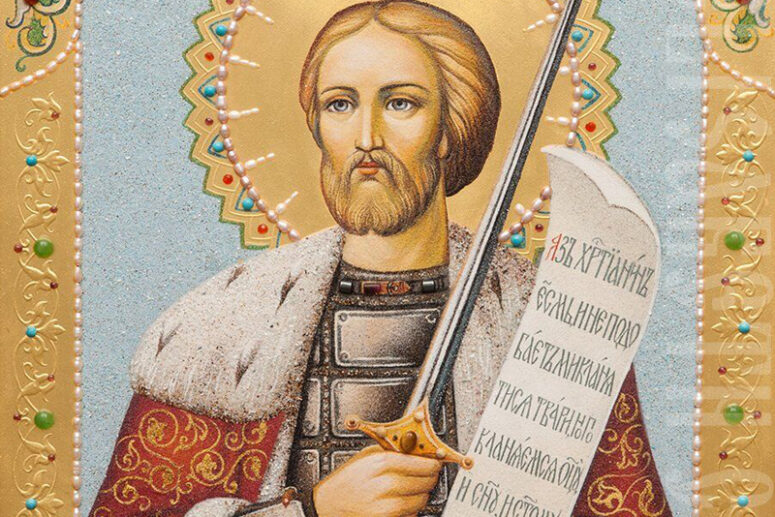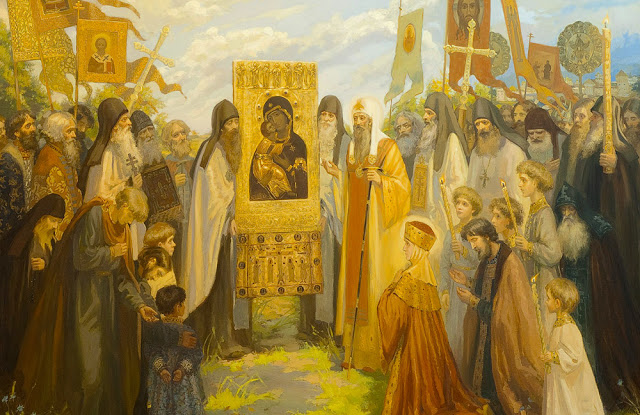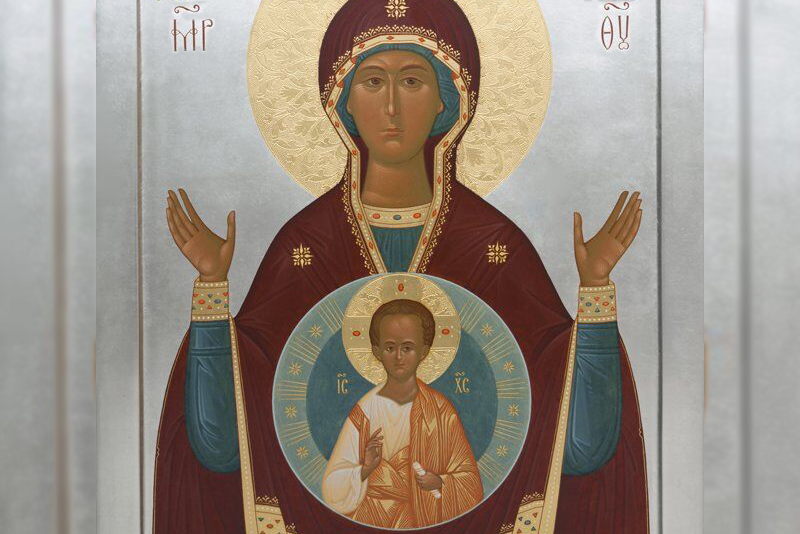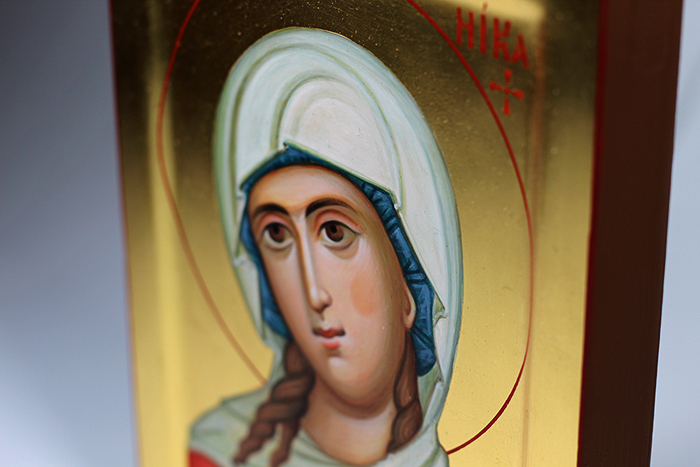
Dmitry Trofimov, head of the Tsargrad creative workshops answers.
Indeed, it is unlikely that the holy and right-believing Prince Alexander Nevsky wore a mantle lined with ermine. This detail is symbolic. It appeared long after the saint’s glorification took place and the first icons of him were written. The relics of Alexander Nevsky were first discovered in 1381, after the Battle of Kulikovo. The monastery celebration was then introduced. The universal veneration of St Alexander as “the ancestor of the Moscow sovereigns” was established In the middle of the 16th century followed by the appearance of new iconographic patterns.
Before Peter the Great, the icons of St Alexander Nevsky, who took the vows of schema before his death, depict him dressed in a monastic robe. One such icon can be seen in the State Historical Museum. The 16th century hagiographic image represents the Grand Prince as a humble schema-monk.
It is noteworthy that pattern books on icon painting state that “He himself is broad-shouldered in body” thus conveying information about the saint’s physical strength.

Alexander Nevsky was often portrayed as a sovereign warlord in book miniatures or in monumental painting. The mural painting of the Archangel Cathedral in Moscow Kremlin depicts the saint in rich princely vestments: a long fur coat and a fur-trimmed hat. St Alexander Nevsky was depicted with a cross as often as with a sword in his hand.
It was during the reign of Peter the Great that the saint, deeply revered by the people, became the heavenly patron of the new capital of Russia. Ironically, his appearance as a schema-monk was banned from the icon painting rulebooks at that time. On the initiative of the first Russian emperor, the Holy Synod ordered “not to write icons of St Alexander in monastic attire… but to paint his images dressed in the grand duke’s vestments.” In time, history made its corrections in iconography resulting in St Alexander Nevsky being portrayed with the attributes of sovereign (rather than princely) power. Such details as the royal scepter, the crown and the mantle lined with ermine are attributes of a powerful ruler. In some cases St Alexander Nevsky was even portrayed in a suit of armor. But this detail did not take root in iconography, unlike lorica segmentata.
The right hand held against the chest is a characteristic gesture of the saint on many icons. It draws our attention to the fact that Saint Alexander Nevsky combines features of a powerful sovereign commander and someone who grieves and prays for the Russian land. All of the above iconographic versions are preserved in modern icon painting. The choice of a particular pattern depends on the aspects of the saint’s multifaceted personality that need to be highlighted.
Both icons are created at our Convent. To learn more click here
Translated by The Catalogue of Good Deeds
Source: https://foma.ru/pochemu-svyatoy-aleksandr-nevskiy-v-gornostaevoy-mantii.html




